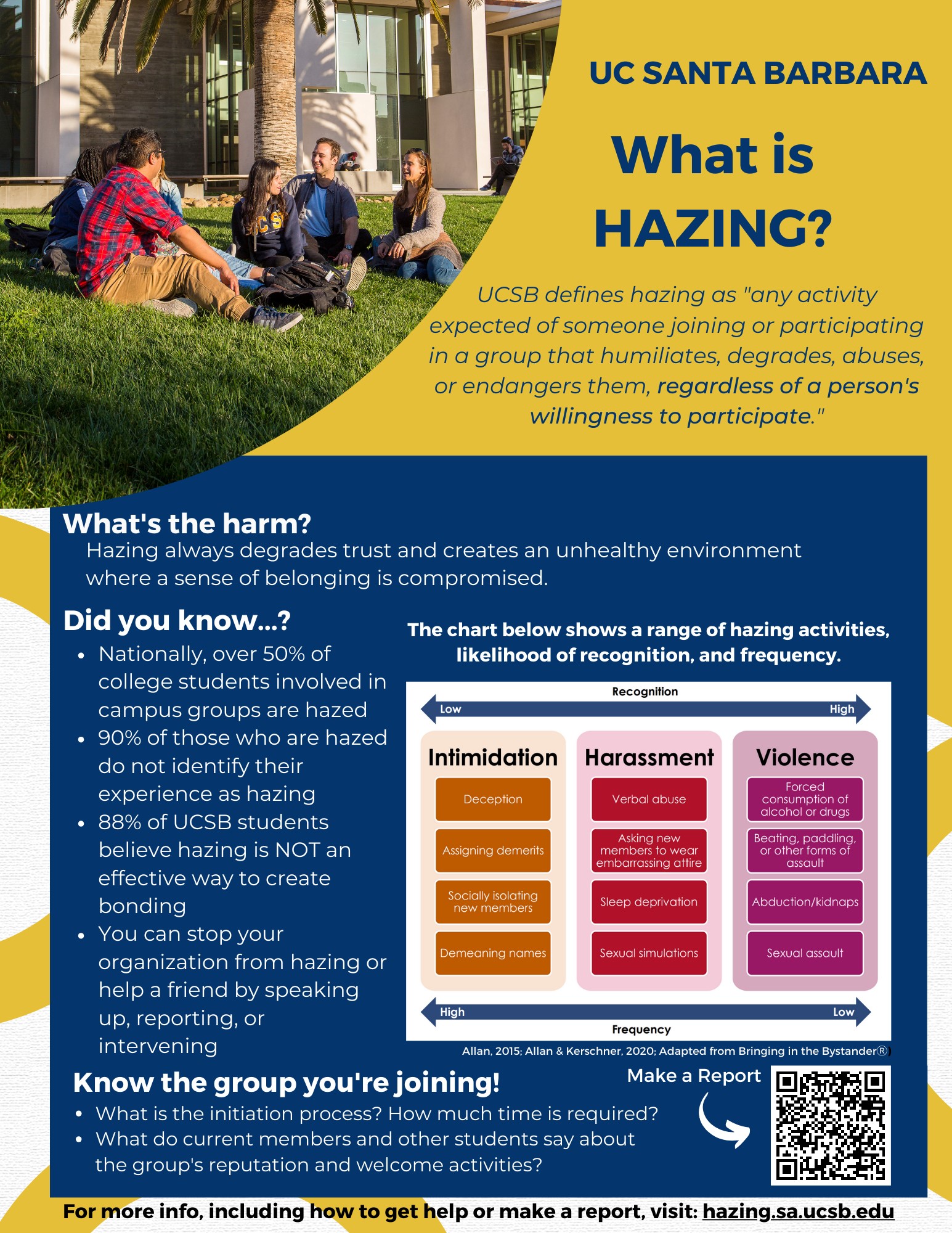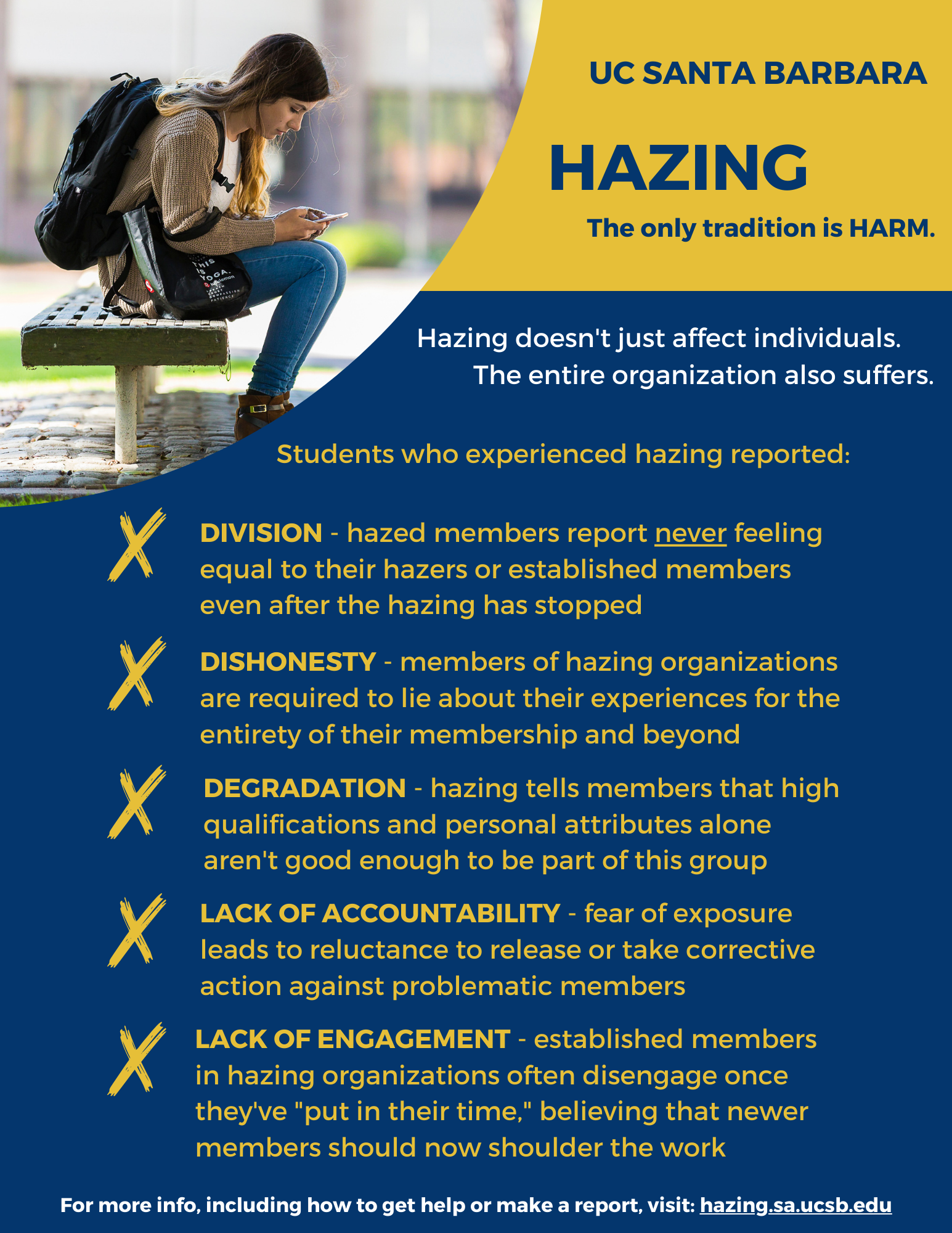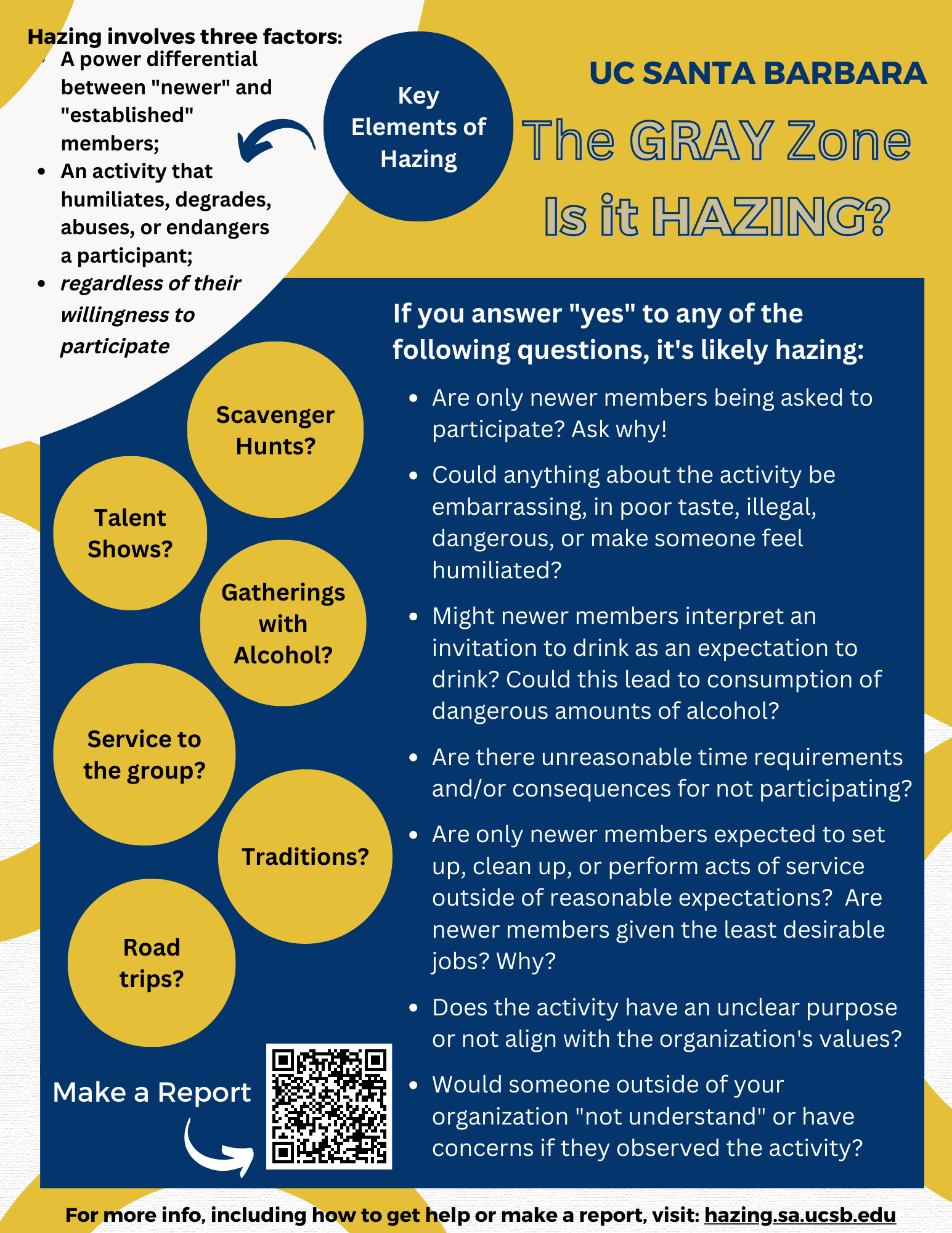Family/Staff/Faculty
Facts
- 50% of students experience hazing behaviors prior to college
- Just over half of students involved in campus groups will be hazed in college
- 90% of students who are hazed do not identify their experiences as hazing
- 95% of incidents students identify as hazing go unreported
- Although popular media associates hazing most closely with fraternity and sorority organizations, students are more likely to be hazed in athletic organizations than in fraternities or sororities, and hazing can happen in any organization.
What to do if you think your student may be being hazed
- Listen and be supportive
- Don't assume that your student is at fault or complicit in their own hazing
- Validate their experiences and let them know that the behavior is not okay
- Encourage your student to report their experiences to the University or make a report yourself
- Encourage your student to seek support from confidential on-campus resources such as CAPS or CARE.
Organizations
Common misconceptions
Read more
Hazing activities bond group members together through shared experiences and overcoming group challenges
- While hazing experiences may create camaraderie amongst those who have gone through them, any attachment is based on shared trauma, being an out-group, and mistrust rather than true bonding which is based on shared values, inclusion, and trust
Hazing provides an efficient way to determine which new members are serious about their desire to be in the organization
- Hazing is a very confusing experience for new members and their commitment to the organization is often questioned during and after a hazing incident as they process what they have experienced
Read more


